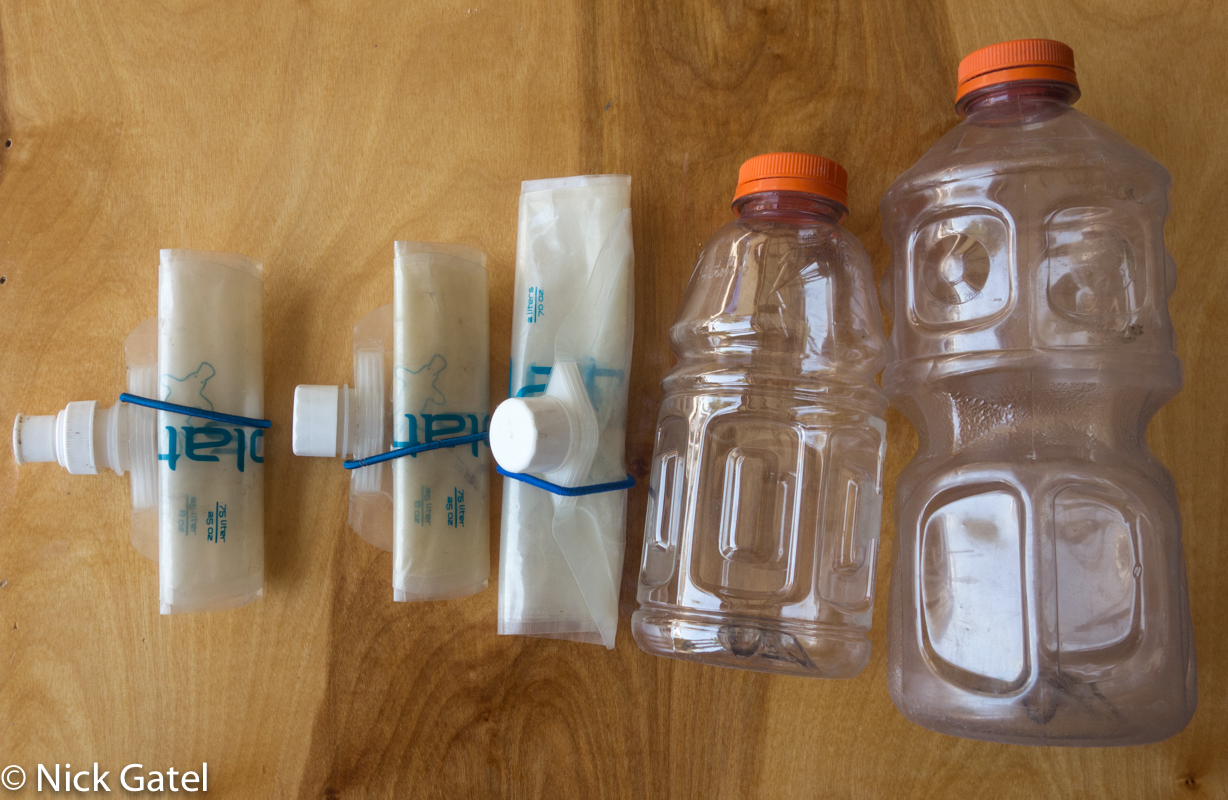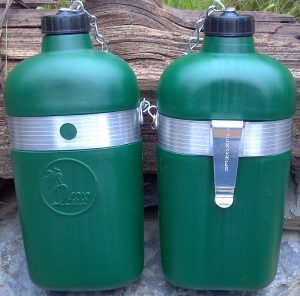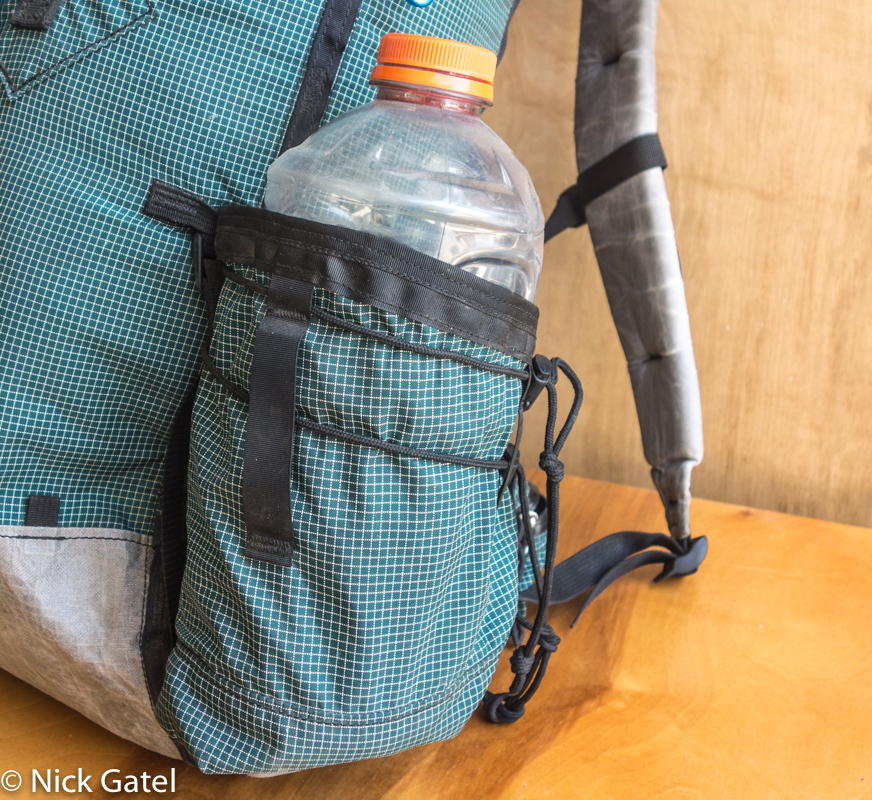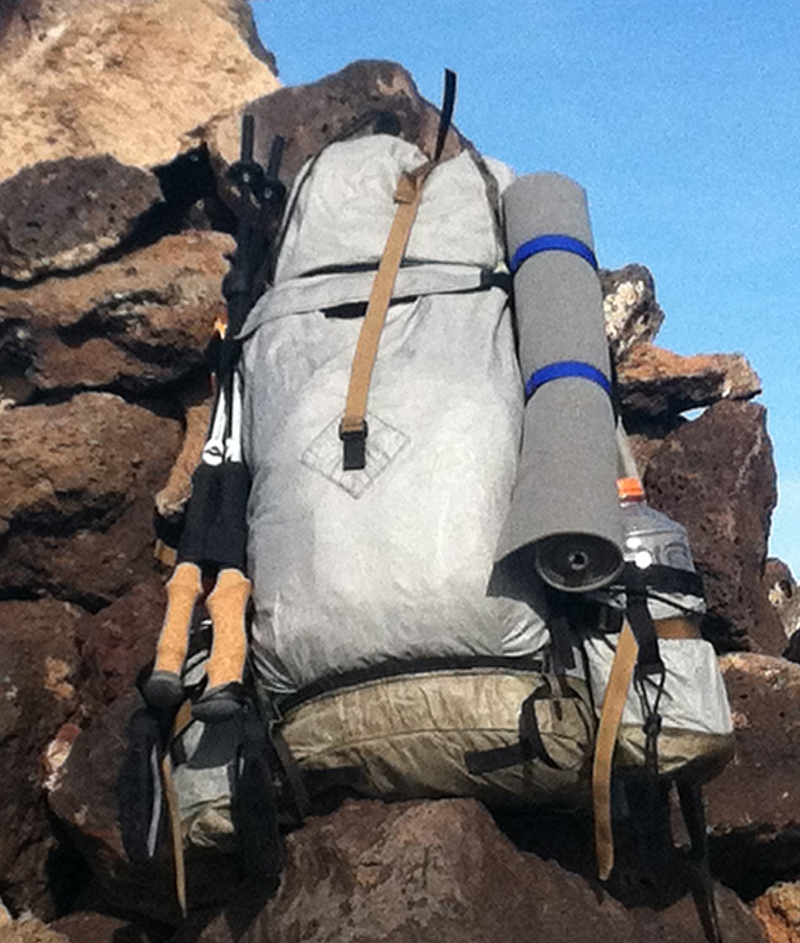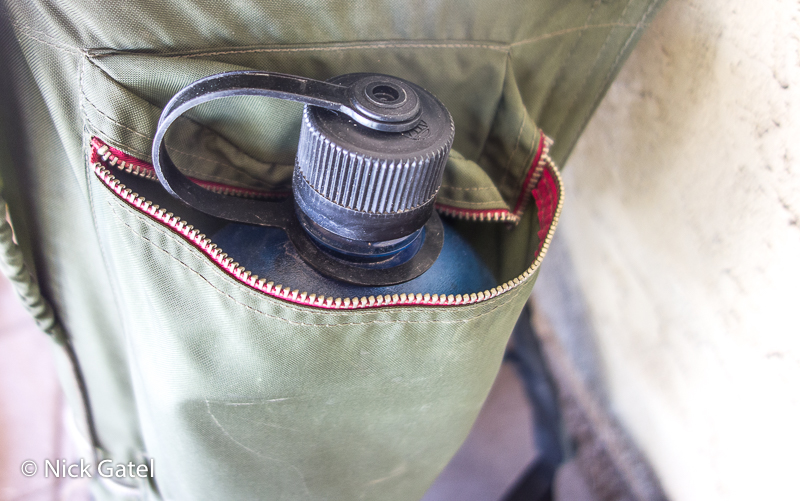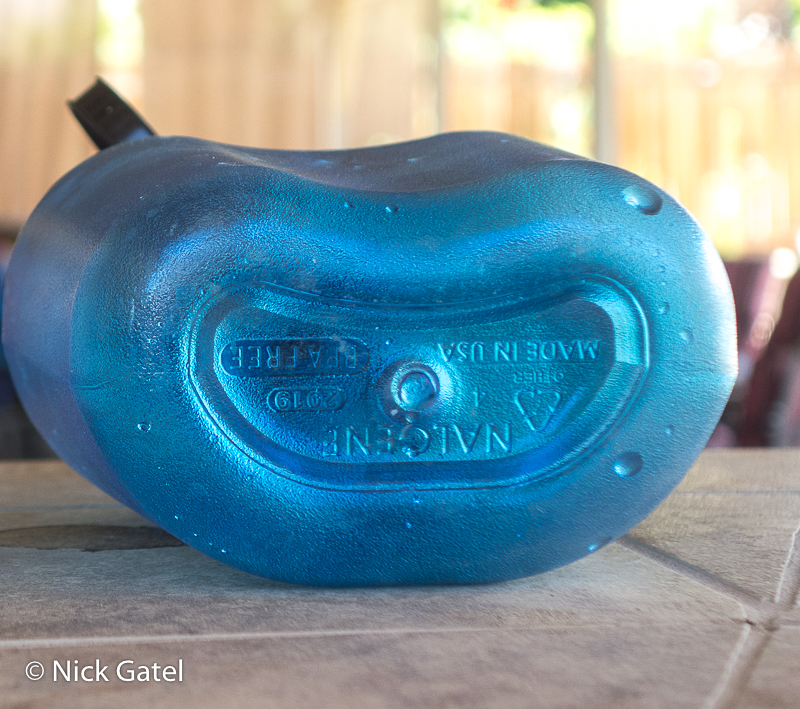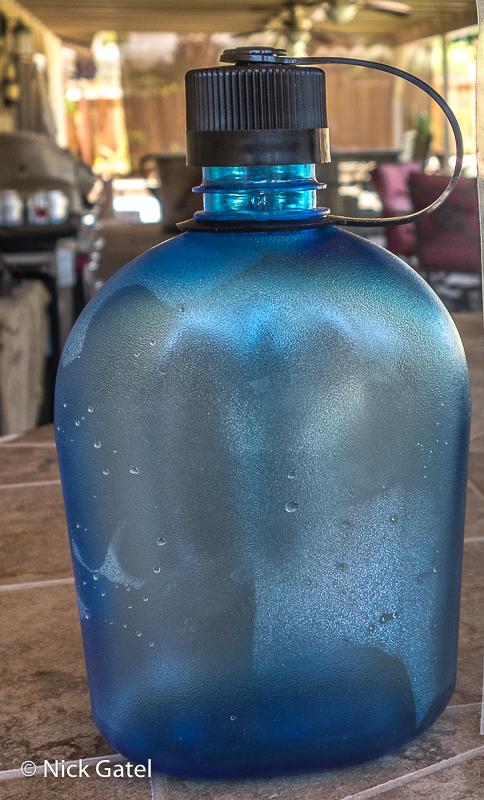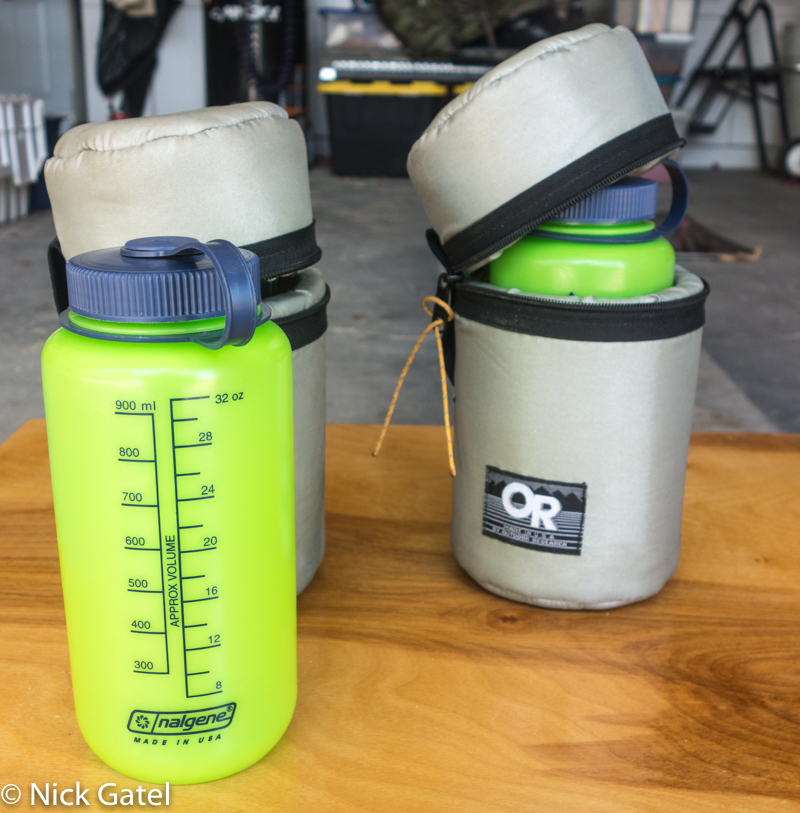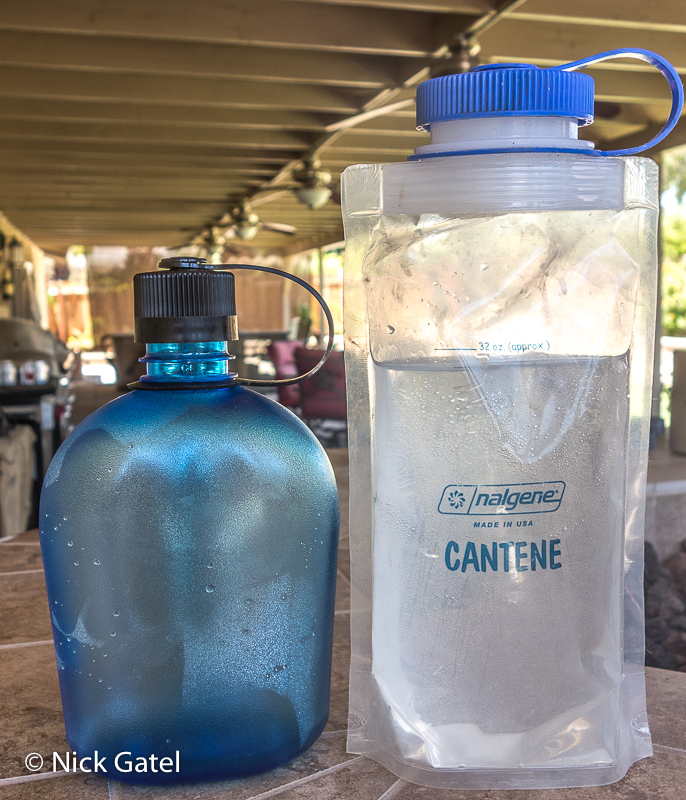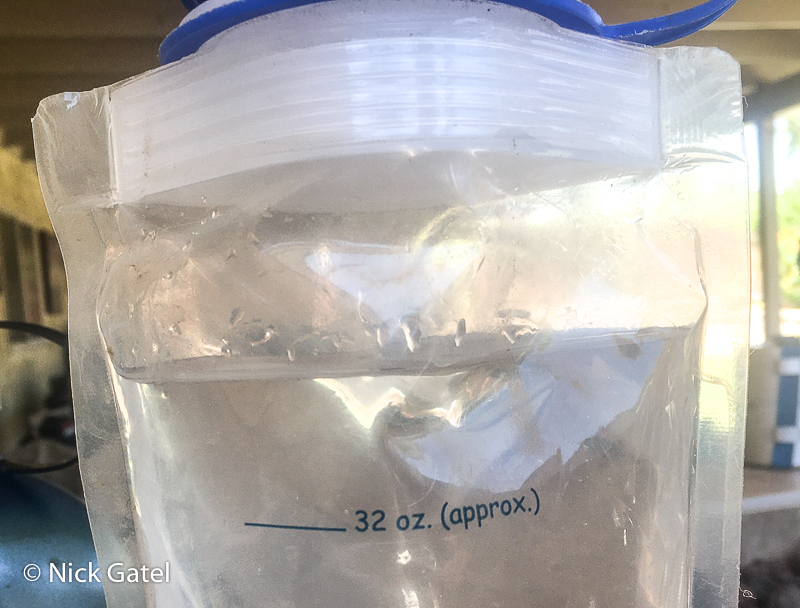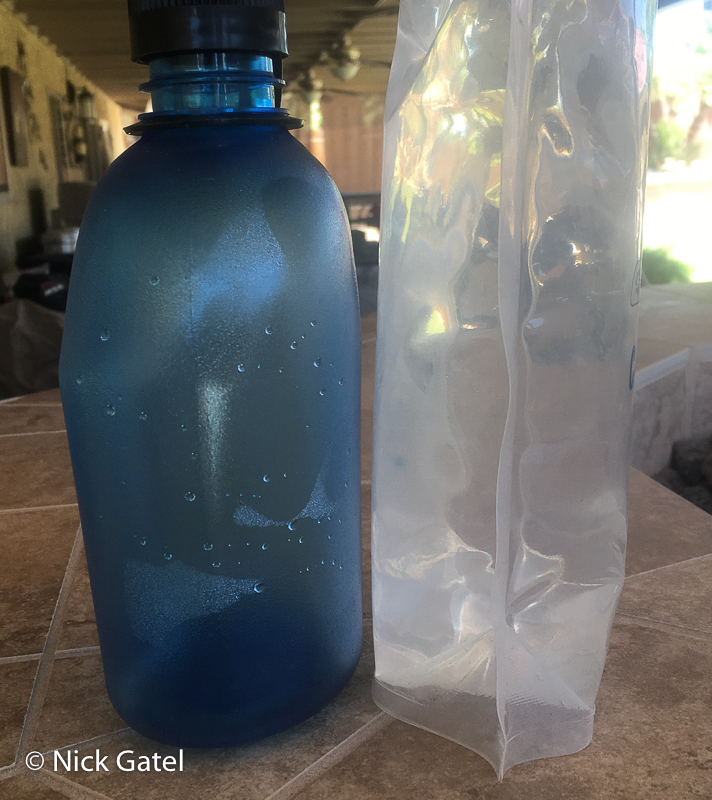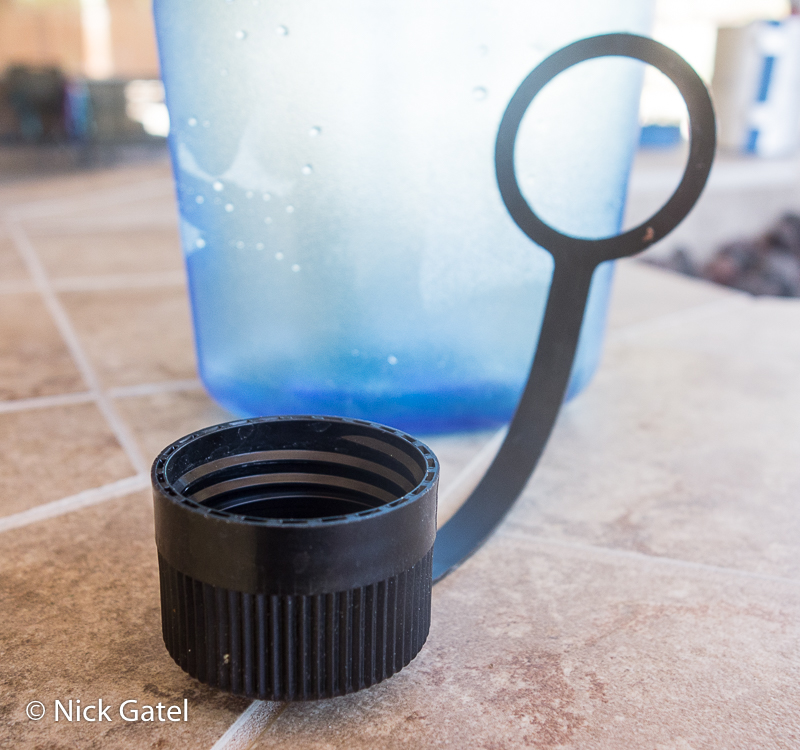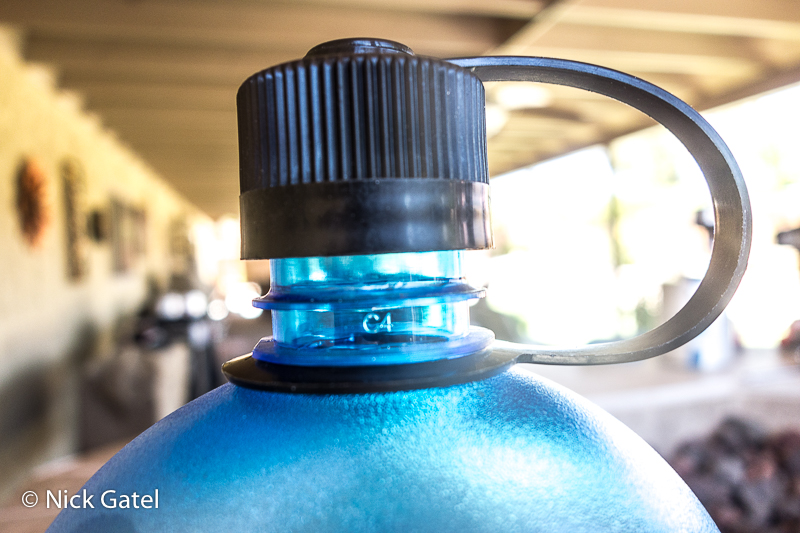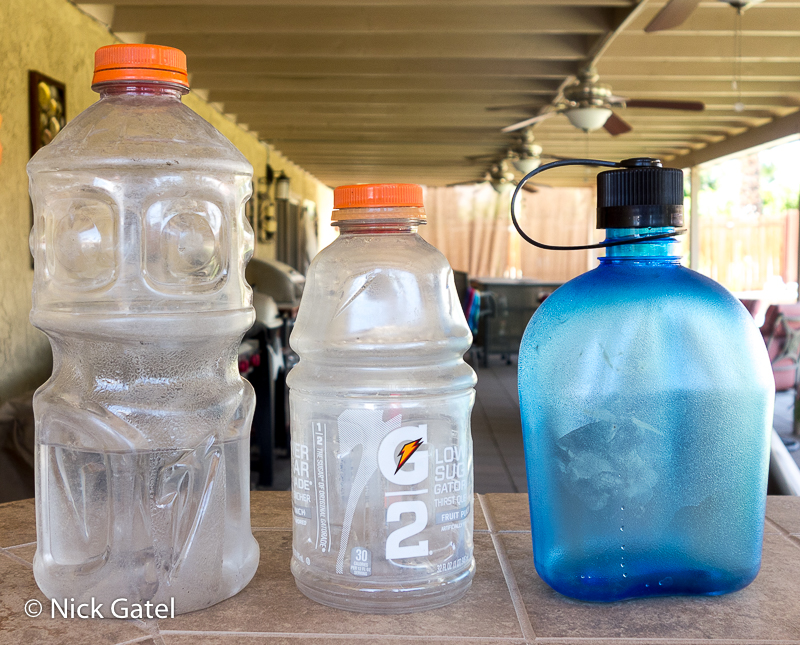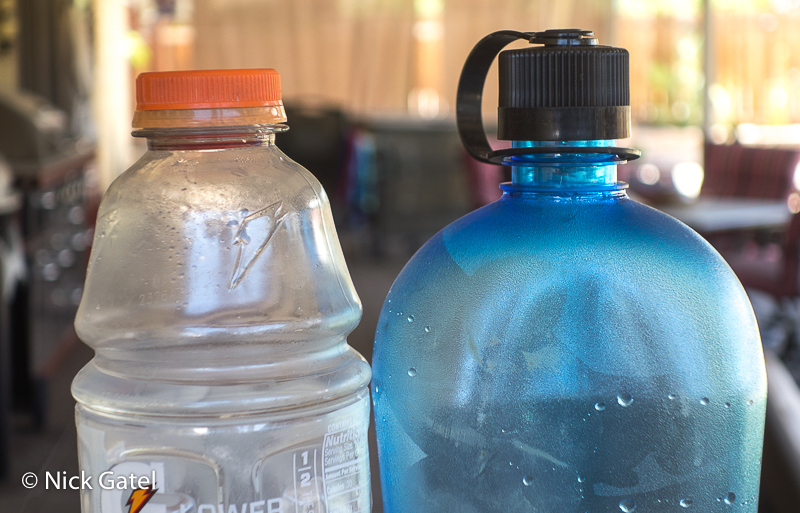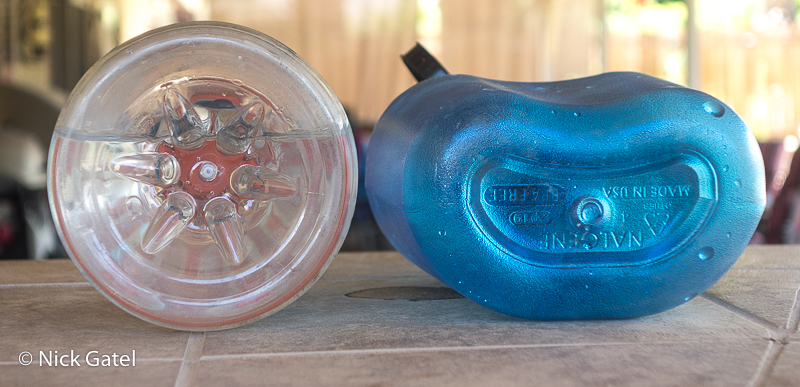This isn’t a review. Reviews should entail dozens and dozens of days of use. It would be even more preferable to use a product for ten years before reviewing it. Long-term usage can discover faults or weaknesses in a product.
On the other hand, I’ll be 70 years old in November, so I won’t have many (or maybe even one) ten-year blocks of time remaining. So let’s call this post a first impression.
Gear Obsession?
These are water bottles. A water bottle should be a simple thing. Why do we (myself included) take deep dives into the nuances of a simple product? These things take time to photograph and write-up. Perhaps our time (we who decide to write about such mundane subjects) would be better off to just go for a hike — I must agree with my own criticism. But keep in mind, I don’t have a job (retirement is bliss) and I can’t go backpacking or camping everyday because I have a wife and home that are high priorities in life.
The Best Water Bottle — Or the Search for the Holy Grail of Water Bottles?
A couple years ago, I wrote the “Best” water bottle was free, and presented the recycled Gatorade bottle as my water vessel of choice.
That conclusion still stands. Keep in mind that best for me does not equate to best for you.
No tool or piece of gear is truly best in all circumstances. Sometimes a tool or piece of equipment is best suited for a specific situation or conditions.
I have two backpacks that are used on over 90% of my backpacking trips. One has a smaller capacity than the other. The smaller one weighs less. If all my gear fits into the smaller and Iighter pack, that is the one I take.
I have one tent I use most of the time. But I have two others I use for specific conditions: anticipated extreme winds and snow. My go-to shelter won’t hold up in 70 mph gusts of wind, nor keep me dry and safe in two feet of snowfall overnight.
What a Water Bottle Should Do
It should hold water and not leak. If I am hiking in mountains where water is plentiful, I may just carry a small-repurposed water bottle and a couple empty bottles for carrying additional water to my night camp. I may carry one or two stout water bottles and a couple rolled-up ones for night use. This strategy reduces bulk in my backpack.
I like to carry as much water as possible on outside of my backpack. An external holder or pocket is going to keep the bottle somewhat vertical, reducing the chance of a loose cap leaking. If an external bottle begins to leak it is more likely I will notice the leak sooner.
I primarily hike in deserts where water is scarce. My trips revolve around and are planned according to water sources. I must have enough water between each source, which normally are spaced a day or two apart. Should a water bottle completely leak between sources, the consequences can be serious. Sometimes I may carry one, two, three, or even four gallons of water. To most hikers this may seem to be a lot. In deserts I am always going to work to conserve my water supply, and at the same time ensure I drink enough to stay well hydrated. In between water sources I am not going to wash my body, wash clothes, cookware or utensils. Along with this, I want to carry as little water as possible, because water can be the heaviest item in a pack. Obviously, with this kind of water requirements, I need to store water inside my pack. The containers shouldn’t be bulky odd shapes. Otherwise I may need to store them sideways to maximize space, which I would like to avoid.
A water leak inside a backpack poses two problems: obviously a loss of water, and the potential of soaking critical items like a down jacket, or down sleeping bag/quilt. Deserts are not always hot. In winter it is common for nighttime temperatures to drop below freezing.
A list of water bottle requirements include:
- Robust construction to avoid accidental breakage
- Foolproof method of avoiding cap leaks
- Minimize bulk if needed to be stored inside the backpack
- As light as possible while attaining the three previous bullet points
The US Army Canteen
In my early days of backpacking I used military canteens that were readily available and inexpensive at Army surplus stores. First I used aluminum ones, then switched to plastic canteens to save a little weight. They were robust and compact.
These plastic canteens left an aftertaste, especially since I used iodine tablets to purify water.
In the ‘80s I switched to lighter canteens made by a company named Oasis. The company is still in business; still make the same canteens that are made in the USA.
I didn’t need the metal belt clips and removed them. After a while the little gasket in the cap would get hard and leak, but it was easy to make new ones. The military surplus and Oasis brand canteens were my only water containers for forty-plus years. The one exception were special bottles in insulated covers for trips in sub-freezing weather.s
In 2008 I started to make significant changes in my gear to reduce weight, sometimes going too far with items that were just too fragile for the conditions. In 2010 I started moving towards a more balanced approach with light but durable gear, and a focus on function. Most of my gear is still fairly light. On most trips my backpack and all the gear in it weigh under ten pounds before I account for fuel, food, and water.
Packing Water Bottles
External Storage
I bought two new packs in 2010-2011. Both were custom built and fitted by Dan McHale of McHale Alpine Packs. I wanted exterior pockets to hold a 64 ounce Gatorade bottles. This is planning ahead to incorporate something that works.
Dan McHale isn’t the only one to design a backpack water pocket to fit a specific container.
How about the, arguably, most influential backpack builder ever — Dick Kelty. What did he do?
Take a close look at this old Kelty pack:
The pocket is tapered from top to bottom. And what is hard to see, the outside of the pocket is curved from side to side. What was he thinking when he designed this? I don’t know, but check this out:
The bottle is almost flat where it rests against the main pack body, and the curvature of the front of the bottle matches the curvature of the outside of the pocket.
This is the bottle below:
It is the Nalgene Oasis Bottle and it is the same size and shape as the old Army canteen. In fact, it will fit perfectly into a US Army canteen cup and fabric cover. Did Kelty design his pockets around the old canteen? I don’t know, but it sure looks like it.
Internal Pack Storage
I often need to carry water in my pack. There is no way around it. Only so much water can be carried on the outside and maintain an efficient center of gravity. Because water often needs to be carried internally, I must face the fact I cannot afford a leak because I would, (1) lose some of my water inventory and (2) can soak critical gear like down clothing and sleeping bag or quilt.
Water Bottle “Failure”
Not long ago I cross-threaded the cap on a 32-ounce Gatorade bottle, resulting in the loss of most of the water. This was a user error. Part of the problem was the round shape of the bottle. To fit everything into my pack, I had to lay the bottle sideways. It is a bulky item, and cylinders (a bottle) in storage waste a lot of space. After this leak, I decided it was best to go back to a canteen, which has a more rectangular shape, and a more secure cap.
Several years ago I gave my Oasis brand canteens to a young person who didn’t have the money to put a backpacking kit together, and I had just discarded all my old military canteens last year, mostly because they had an after-taste in the material. I had always been happy using canteens, and the main reason to change was a Gatorade bottle was lighter — but bulkier, more prone to leaks, and not as robust. I had traded one negative at the expense of three positive factors. So I began an Internet search.
Oasis still makes those bright green canteens. I couldn’t find anyone who sells them except purchasing directly from Oasis, at a cost of $16 each, plus the caps are a weak point, although Oasis sells replacement caps for $5 each or 6 for $12.50.
Then I stumbled onto the Nalgene Oasis Bottle. I’ve used Nalgene products before and they are of excellent quality. I use them in sub-freezing temperatures with an insulated carrier to keep the water from freezing.
I went ahead and ordered four Nalgene Oasis Bottles from Amazon.
What’s in a Name?
I find this interesting. The Nalgene bottles above are really just replicas of the plastic military canteen.
But Nalgene calls it an Oasis Bottle. Then we have the actual Oasis brand bottle, similar in shape to a canteen, but not thtt close. Nalgene does make a soft-sided bottle that can be rolled up for storage when empty. Obviously not something we would call a canteen, but Nalgene calls in the Cantene, a play on spelling. How do these companies come up with these names?
Nalgene Product Comparison
Anyway lets, take a look at these two Nalgene offerings.
Both are specified to be 32 ounces, or 1 quart. Look at how tall the Cantene (on the right) is compared to the Oasis. Also note I have filled the Cantene to the 32-ounce line, which leaves a lot of space at the top. I wondered if there was some special reason for this.
Then I looked closely at the line, and it said “32 oz. (approx.)” Hmm. I emptied this soft-sided bottle, measured out 32 ounces of water and poured it into the Nalgene Cantene. Now look at the water level below:
There isn’t a significant difference in the depth of either.
So the soft-sided Cantene it much taller, making it more difficult to put inside a pack, unless it is laid on its side. I have done this many times, but always in the back of my mind is the worry of a leak from the cap. Also, after a period of time, the seams on the soft-sided bottle can come apart. Or I have heard about such failures along with the Platypus brand of soft-side bottles. I’ve never had either fail. I have replaced a few of these soft-sided bottles over time as a precautionary move.
One benefit of the soft-sided Nalgene bottle is it is lighter (2.3 ounces versus 4.625 ounces) than the Nalgene Oasis.
The Nalgene Cantene has a much larger diameter top and cap, making it considerably easier to fill from a stream of lake. That’s another plus. All of these are things one wants to consider when selecting a water bottle, because there truly isn’t a best choice, other than what is best for you and what you need it to do.
Nalgene Oasis Bottle Features
The Science and Marketing Stuff
Each bottle had this sticker on it. Lifetime guarantee sounds good and I’ve had good luck with different Nalgene products over the decades.
I don’t really know what “BPA/BPS Free” means. I think it might indicate I won’t get cancer from using the product. That’s reassuring — I think.
It is dishwasher safe. Now, I don’t wash any of my backpacking cookware in a dishwasher, because it isn’t safe to do so. Not that the dishwasher itself isn’t safe for my gear, rather my wife has command and control of all kitchen appliances and forbids me to operate any without her direct adult supervision. This makes the dishwasher unsafe for me. Especially when she caught me washing wheel bearings in it a few years ago.
The water bottle is translucent, so you can see how much water remains. That’s a good feature compared to the old military canteen, but most water bottles marketed for hiking or backpacking these days have this same feature. To me, this would be a minimum requirement anyway.
No graduated volume markings. I would be nice if you could measure water. If you needed to pour 16 ounces into a pot, graduated markings on the bottle would make it easier. Not a deal killer. But it would be a “nice to have” feature.
Securing the Cap
Experienced hikers know that caps can get lost, fall of the container and float away in a stream or river. A water bottle serves little purpose if you don’t have a cap.
All the bottles I received had caps that were loosely attached to the neck of the bottle. Just turning the bottle upside down, the loop-top cap would fall off.
Not a defect, the loop-top needs to be pushed down over the lowest ridge on the neck. It took a little pressure from my thumb’s fingernail to work the loop-top over the bottom ridge.
The bottle has just two coarse threads to secure the cap. This makes it easy to avoid cross threading the cap, and provides enough grip to secure the cap.
The cap doesn’t use a gasket, but has a beveled lip in the cap to mate with the bottle top opening.
This should last and will be secure. If you were to damage the top of the bottle or make it oblong by stepping on it, it may not seal.
The cap has serrations on the outside to make it easy to grip when removing or tightening the cap.
The top opening is slightly smaller than a Gatorade bottle, and the difference isn’t noticeable unless you measure both. This is an advantage over a repurposed water bottle, most of which have fairly small diameters.
Going Forward
Most of the time I use my McHale packs and I plan to continue using the Gatorade bottles in the side pockets. It is a good place to carry the weight, right on the hips. I will be using the Nalgene Oasis Bottles for any water I need to carry inside the pack, absorbing a slight weight penalty to gain better pack-ability, robustness, and minimize the risk of leaks.
With my old external frame Kelty packs, I’ll use the outside pockets to carry the bottles, since it is a perfect fit and any extra water in the pack will be in the Nalgene Oasis Bottles too.
And there you have it. 2,385 words to discuss something as simple as a water bottle. I must be insane or obsessive/compulsive.
This website may be compensated for linking to other sites or for sales of products. As an Amazon Associate I earn a small fee from qualifying purchases at no additional cost to the purchaser.

